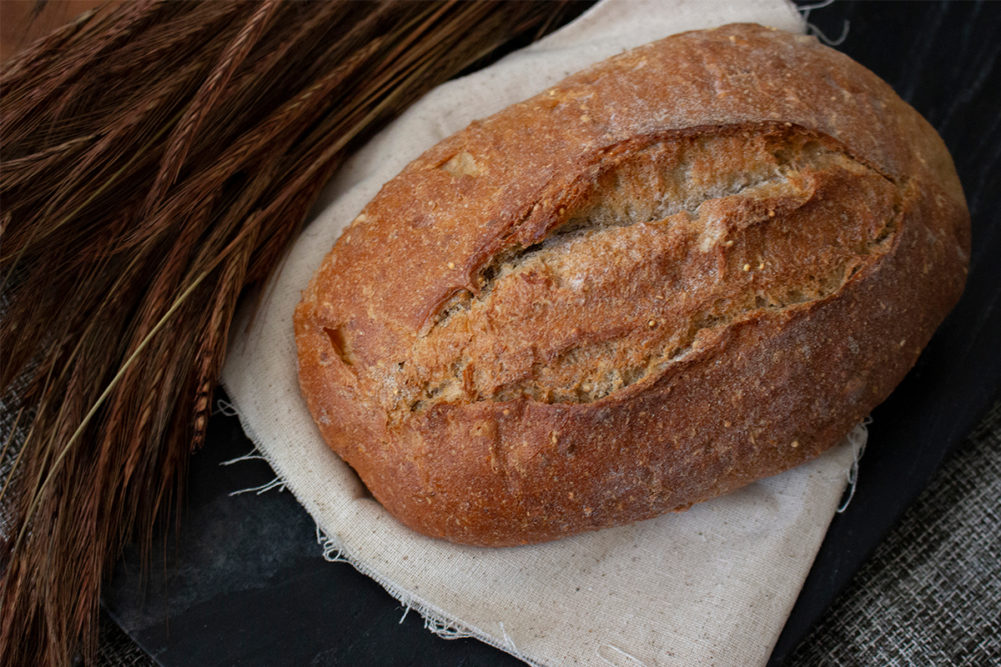Replacing any ingredient in an established formulation is tricky. Dough formulas are webs of ingredients that create the structure of a quality finished baked good. Change one — especially one as functional as vital wheat gluten — and others may need to be adjusted to maintain the consistent quality consumers have come to expect.
In this case, dough conditioners are often used at low levels, which is good considering these changes are probably being made quickly to accommodate supply chain issues.
“Dough conditioners are used at very low levels and most of the time designed so there are no big formulation changes that need to be made,” said Daniel Marciani, research manager, bakery, Glanbia Nutritionals. “If a dough conditioner is causing the baker to make big formulation changes, they have the wrong conditioner or are using too much.”
Bakers should take a second look at their formulation to avoid surprises. When using enzymatic-based dough conditioners to reduce gluten in a formula, the first ingredient bakers should consider is the amount of water being used.
“If you replace gluten with an enzymatic solution, you will need to remove some water — 1% water for every 2% of gluten removed — otherwise the dough will have extra hydration and the dough rheology and machinability will change, leading to differences in the finished product,” explained Sean Hart, R&D manager, Puratos.
This is because enzymes don’t need as much water to function in the formulation.
“Water is the primary ingredient to look at when making a gluten reduction and replacing with a dough conditioner that has a much lower use level,” said Ben Reusser, senior research development technologist, Cain Food Industries. “Gluten will absorb a lot of its weight in water while dough conditioners like enzymes may not.”
On the other hand, bakers can avoid removing water by adding more flour, if that’s a route they’d rather take.
“Another option is to add 1% of regular wheat flour for every 1% gluten removed from the formulation,” said Luc Casavant, application director at Lallemand Baking. “This approach will not require any water adjustments.”
If bakers do remove the extra water, that will also have implications in the mixing bowl.
“Vital wheat gluten might require more water and a longer mixing time than when using a dough conditioner,” said Sherrill Cropper, PhD, new product development lab manager, bakery formulator, Lesaffre. “Typically, a dough conditioner would be used at a lower dosage than vital wheat gluten.”
All of these adjustments are due to the very nature of the enzyme ingredients being used in the dough conditioner and goes back to their strengthening properties.
“It is not uncommon to make these adjustments when adding a dough conditioner to the formulation as the gluten development becomes stronger and requires those adjustments,” said David (Guilley) Guilfoyle, senior group manager, bakery/fats and oils, IFF.
Bakers also need to consider the environment as well as the dough itself when using enzymatic-based dough conditioners. Enzymes are sensitive to changes in temperature and pH. These two elements activate the enzymes to do their work or deactivate them.
“You want to make sure you are formulating at the optimal functionality of the dough product you are using,” said Amr Shaheed, technical services and application development manager, Innophos. “If working with enzymes, you need to pay attention to what type of dough environment you are providing.
Functionaility is heavily reliant on pH, temperature, time of exposure and availability of the substrate being worked on by the enzymes.”
And bakers cannot forget to evaluate the rest of the formulation when swapping out gluten for dough conditioners. If there are other enzymes present in the formulation, bakers could see changes in product quality, as enzymes can be easy to overdose.
“Some ingredients are strengthening while others are weakening,” said Tess Brensing, senior product manager, functional systems, Corbion. “If you have a system with too much strength and then you add relaxers, you’re working too hard to make that formula what it needs to be.”
She recommended bakers remove all other dough conditioners and enzymes from a formulation when looking to use dough conditioners to replace gluten. Ms. Brensing also cautioned against treating enzymatic-based dough conditioners like gluten.
“Bakers tend to think more gluten is better, so just adding a little bit more won’t hurt the formulation,” she said. “That’s not the case with enzymes. A little bit more can be a problem.”
While replacing a powerhouse ingredient such as vital wheat gluten may be daunting, it can be done. Today’s enzymatic-based dough conditioners can replicate the strength and stability that vital wheat gluten provides and create the consistent finished product customers and consumers expect.
This article is an excerpt from the March 2022 issue of Baking & Snack. To read the entire feature on Dough Conditioners, click here.





